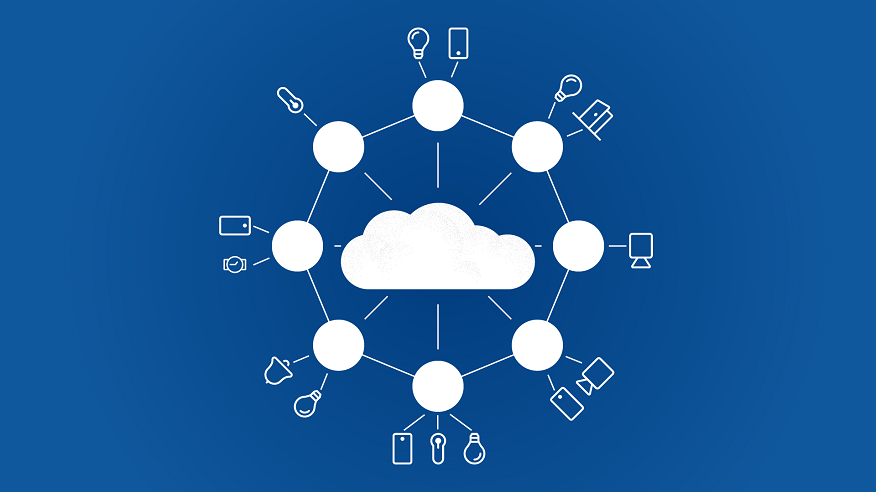In the ever-evolving landscape of technology, the integration of artificial intelligence (AI) with edge computing stands out as a groundbreaking paradigm shift. This synergy brings intelligence closer to where data is generated, fostering real-time decision-making and alleviating the traditional reliance on centralized cloud systems. This exploration delves into the transformative union of AI and edge computing, elucidating how this convergence not only enhances processing capabilities but also revolutionizes the dynamics of data management.
The Edge of Transformation: From Word to PDF
Before delving into the intricacies of AI and edge computing, let’s consider a familiar scenario – the conversion of a Word document to PDF. Traditionally, this process often involved uploading the document to a centralized cloud service for conversion. However, with the advent of edge computing, this transformation from Word to PDF can now occur seamlessly on the device itself.
Edge Computing in Document Conversion
Edge computing empowers devices to perform computational tasks locally, reducing the need for data to travel to a distant server. In the context of converting a document from Word to PDF, edge computing allows the process to take place on the user’s device. This not only saves valuable time but also enhances data privacy by minimizing the exposure of sensitive information to external servers.
Real-time Efficiency and Accessibility
By harnessing the processing power at the edge, document conversion becomes faster and more efficient. Users can experience real-time results without being dependent on the speed of their internet connection or the workload of a centralized server. This shift towards localized processing exemplifies the transformative potential of edge computing in everyday tasks.
The Convergence of AI and Edge Computing
The convergence of AI and edge computing marks a pivotal moment in the evolution of technology. This dynamic synergy is revolutionizing data processing by bringing intelligence closer to where it’s generated, fostering real-time decision-making and transforming the digital landscape.
Understanding Edge Computing
Edge computing involves processing data closer to the source of generation rather than relying on a centralized cloud infrastructure. This paradigm shift is driven by the need for faster response times, reduced latency, and enhanced efficiency in handling vast amounts of data generated by devices such as sensors, IoT devices, and smartphones.
The Role of Artificial Intelligence
Artificial intelligence plays a pivotal role in the marriage with edge computing. AI algorithms, designed for tasks ranging from image recognition to natural language processing, benefit immensely from the proximity to data sources. This collaboration allows AI models to make instantaneous decisions, fostering a new era of responsive and intelligent applications.
Advantages of AI and Edge Computing Integration
The integration of artificial intelligence (AI) and edge computing represents a transformative alliance that holds immense potential for reshaping digital landscapes. In this exploration, we delve into the profound advantages that arise from the seamless integration of AI and edge computing, unlocking new frontiers of efficiency, responsiveness, and decentralized intelligence.
Real-time Decision-making
One of the key advantages of integrating AI with edge computing is the ability to make decisions in real-time. In scenarios where split-second decisions are critical, such as autonomous vehicles or industrial automation, the proximity to data sources ensures minimal latency, enhancing overall system responsiveness.
Bandwidth Optimization
Edge computing helps optimize bandwidth by processing data locally. Instead of transmitting large volumes of raw data to centralized servers for analysis, edge devices can pre-process and filter data, sending only relevant insights to the cloud. This not only conserves bandwidth but also reduces the load on network infrastructure.
Enhanced Privacy and Security
Processing data at the edge contributes to heightened privacy and security. Since sensitive information remains on the device or within a local network, the risk of data exposure during transit to a centralized server is mitigated. This is particularly significant in applications where data confidentiality is paramount, such as healthcare or finance.
Reducing Dependence on Cloud Resources
Traditionally, AI applications relied heavily on the computational power of centralized cloud servers. However, the integration of AI with edge computing distributes the processing load, reducing dependence on cloud resources. This not only enhances scalability but also contributes to more cost-effective and sustainable AI implementations.
Challenges and Considerations
While the fusion of AI and edge computing brings forth a multitude of benefits, it is essential to acknowledge and address associated challenges.
Limited Computational Power
Edge devices often have limited computational power compared to robust cloud servers. Striking a balance between the complexity of AI algorithms and the capabilities of edge devices is crucial to ensure optimal performance.
Data Management and Governance
Decentralized processing requires careful consideration of data management and governance. Establishing frameworks for secure data storage, transmission, and access becomes imperative to maintain integrity and compliance with privacy regulations.
Standardization and Interoperability
As the landscape of edge computing and AI continues to evolve, the lack of standardized protocols and interoperability among devices poses a challenge. Efforts to establish industry standards are crucial for seamless integration and collaboration across diverse edge devices.
Future Outlook
The integration of artificial intelligence with edge computing represents a paradigm shift with far-reaching implications. As technology continues to advance, we can expect to see further innovations in edge AI applications across various industries.
Edge AI in Healthcare
In healthcare, edge AI promises to revolutionize diagnostics and patient care. Devices equipped with AI algorithms can analyze medical images locally, providing swift and accurate results without compromising patient data privacy.
Edge AI in Smart Cities
Smart cities leverage edge AI to enhance urban services. From traffic management and surveillance to waste management, localized AI processing ensures efficient operation and responsiveness in real-time.
Edge AI in Industry 4.0
In the realm of Industry 4.0, the convergence of AI and edge computing drives intelligent automation. Manufacturing processes benefit from instantaneous decision-making, predictive maintenance, and the optimization of production workflows.
Conclusion
The integration of artificial intelligence with edge computing marks a pivotal moment in the evolution of technology. From transforming everyday tasks, such as document conversion, to revolutionizing entire industries, this synergy brings intelligence closer to data sources, unlocking unprecedented efficiency and responsiveness. As we navigate the complexities of an interconnected world, the collaboration between AI and edge computing paves the way for a future where intelligence is not only powerful but also seamlessly woven into the fabric of our daily lives.

